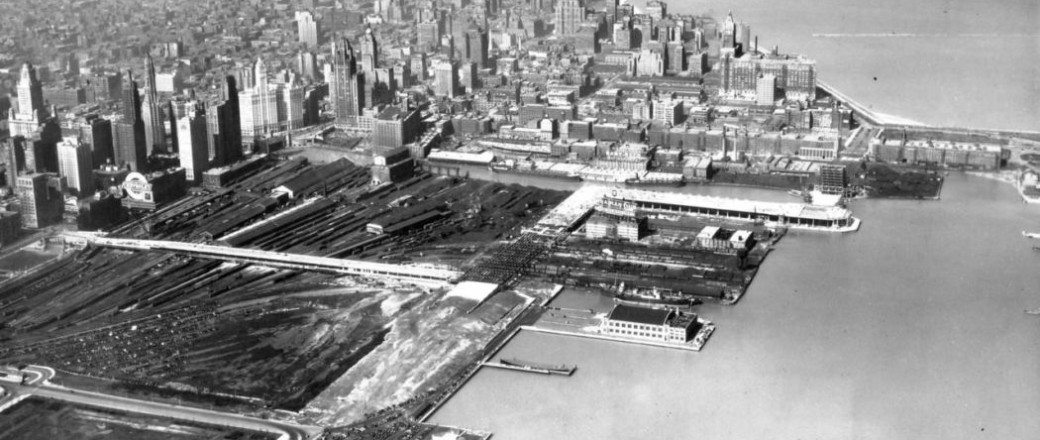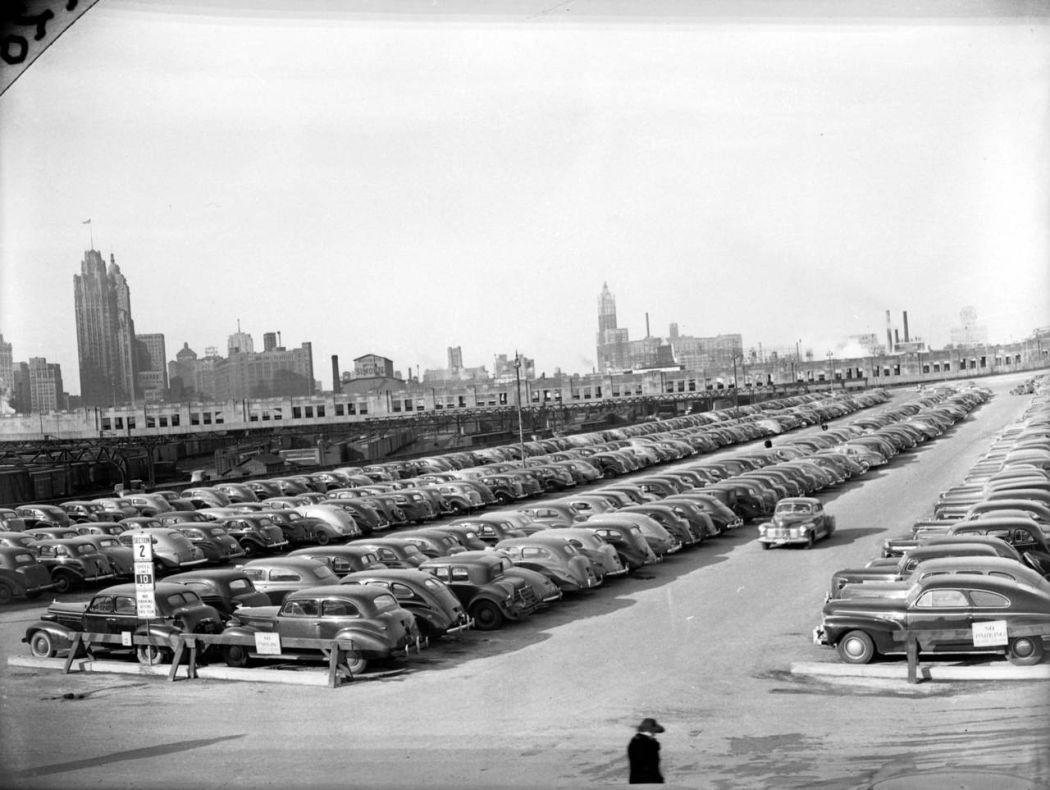The city officially designated the land as a park on April 29, 1844, naming it Lake Park. When the Illinois Central Railroad was built into Chicago in 1852, it was permitted to lay track along the lakefront on a causeway built offshore from the park. The resulting lagoon became stagnant, and was largely filled in 1871 with debris from the Great Chicago Fire, increasing the parkland. In 1896, the city began extending the park into the lake with landfill, beyond the rail lines. On October 9, 1901, the park was renamed Grant Park in honor of American Civil War commanding General and United States President Ulysses S. Grant. At the 1868 Republican National Convention in Chicago, Grant had been nominated for his first presidential term.
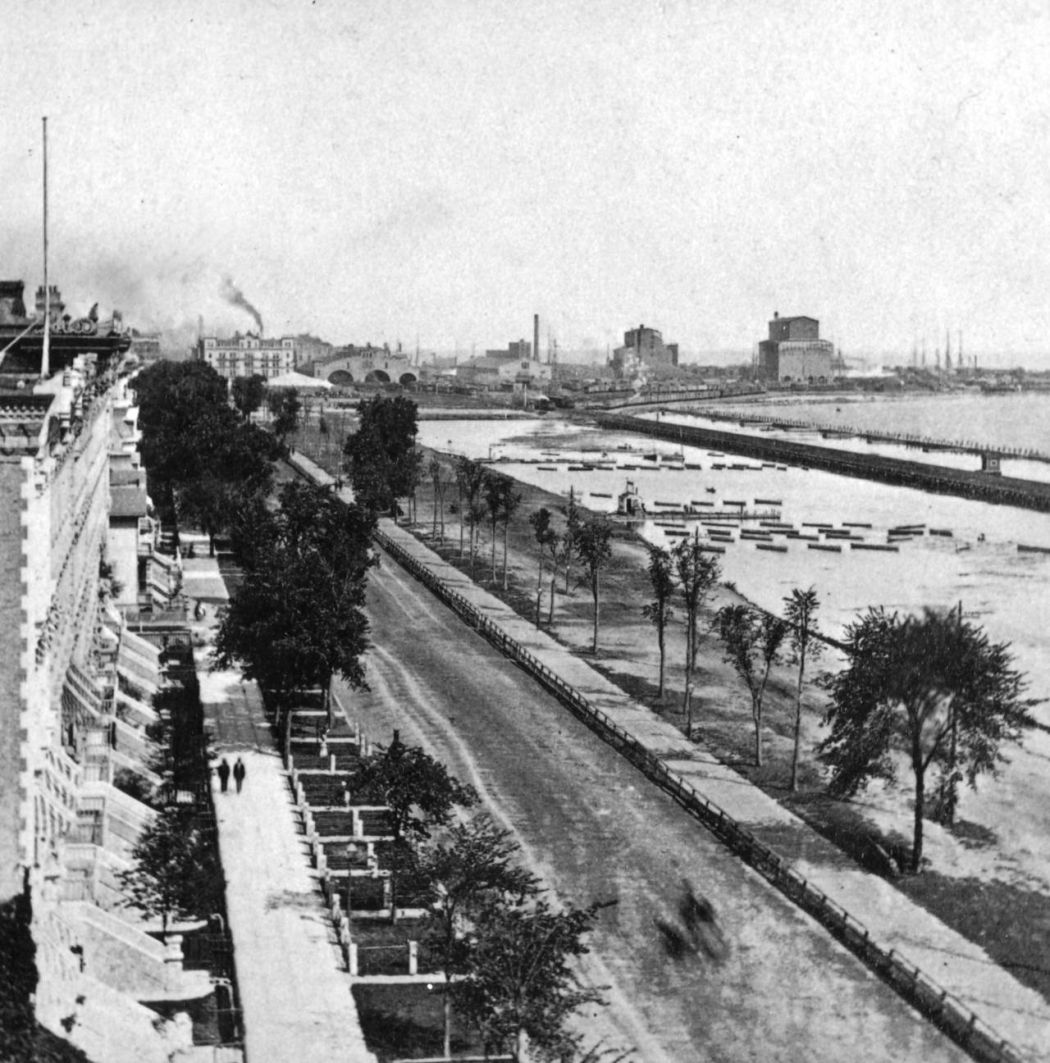
Looking north on Michigan Avenue in 1868, with the homes of prosperous businessmen on the left. Grant Park was nothing more than a marsh-filled lagoon, with rail lines on the right, between Lake Michigan and the lagoon-like area. The estimated vantage point of this photo is from where Congress Avenue is now located. — Chicago Tribune historical photo

This is an 1890’s view of the Grant Park area looking north, showing how it appeared when it was known as Lake Park and cluttered with rail yards and tents. Troops camped in Grant Park in 1894 during the Pullman strike and a reunion of Civil War veterans also camped in the park in 1890. — Chicago Tribune historical photo
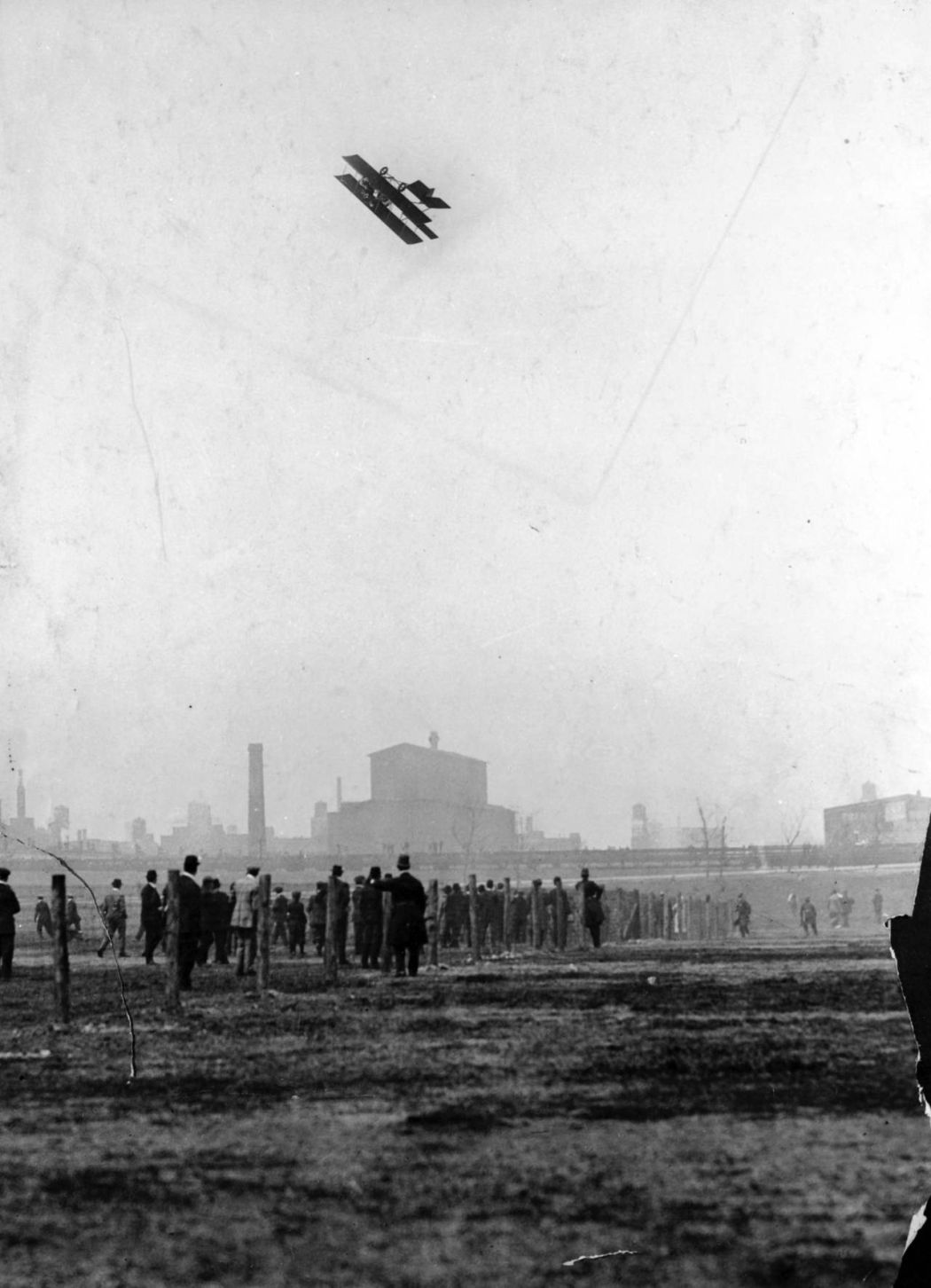
Aviator Lincoln Beachey, in his Curtiss biplane, wowed the crowds at an air show in Grant Park in August of 1911. Beachey broke the world altitude record during the nine day show by flying 11,642 feet above ground. — Chicago Tribune historical photo
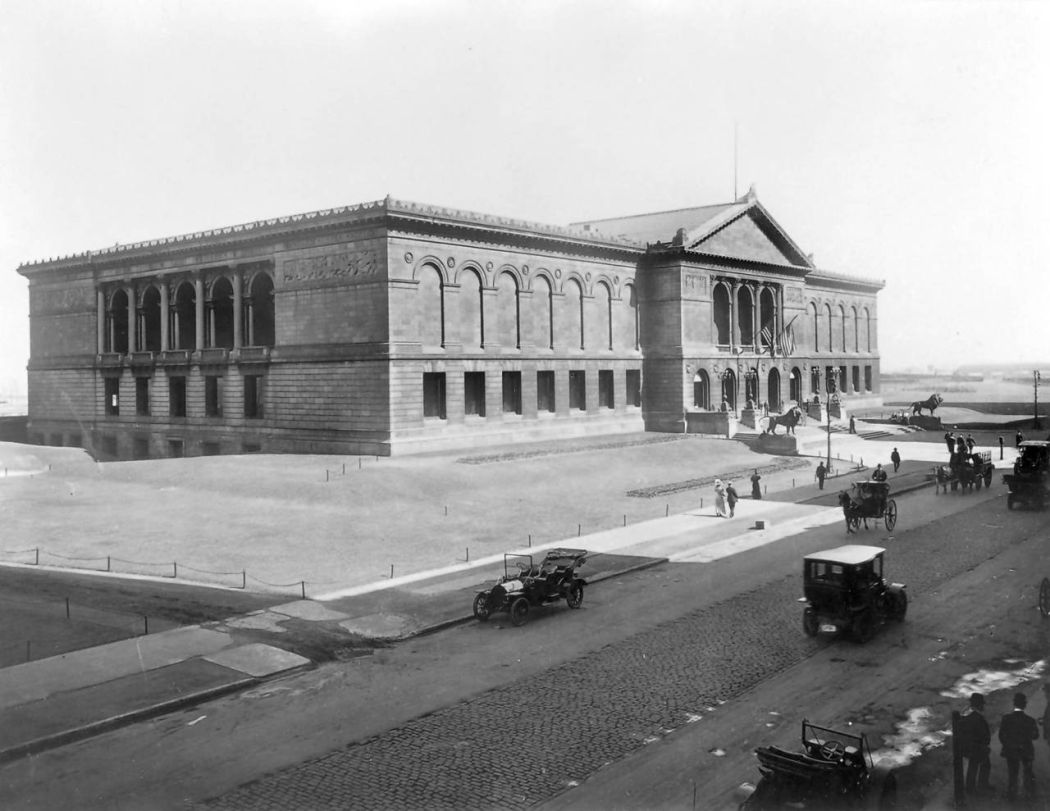
The Art Institute, shown here in about 1900, was founded as the Chicago Academy of Fine Arts in 1879 to “carry on appropriate activities conducive to the artistic development of the community.” — Art Institute photo
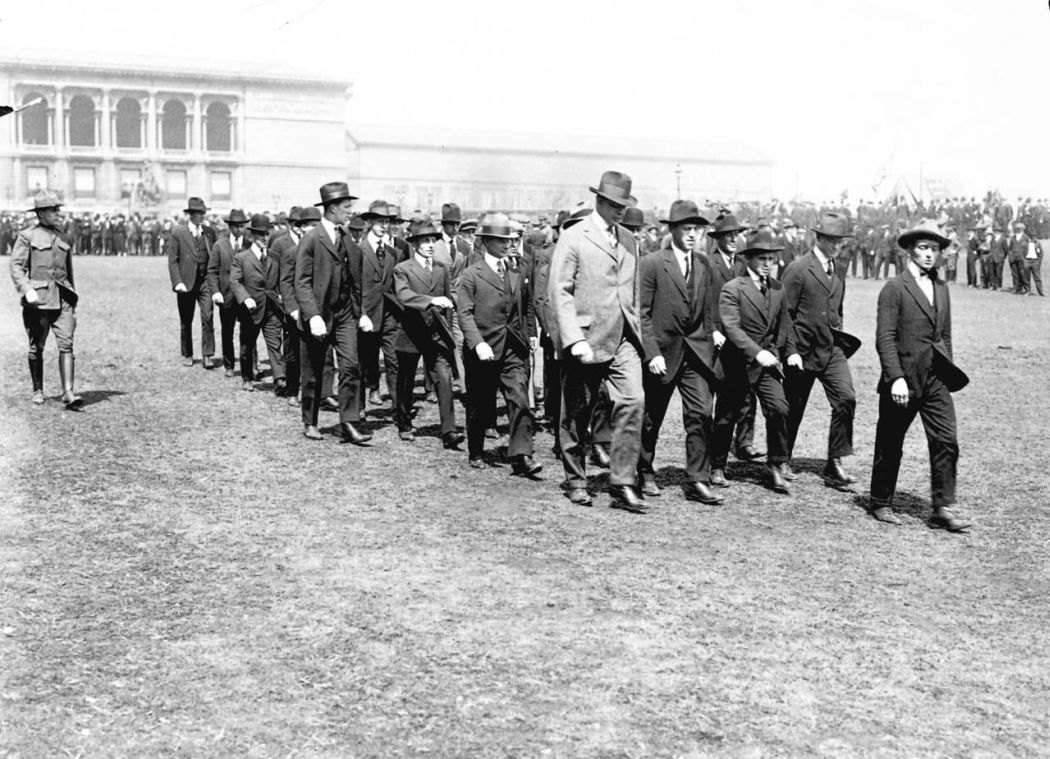
Recruits practice marching in Grant Park in 1917 in preparation for fighting in World War I. The Art Institute is in the background. — Chicago Tribune historical photo
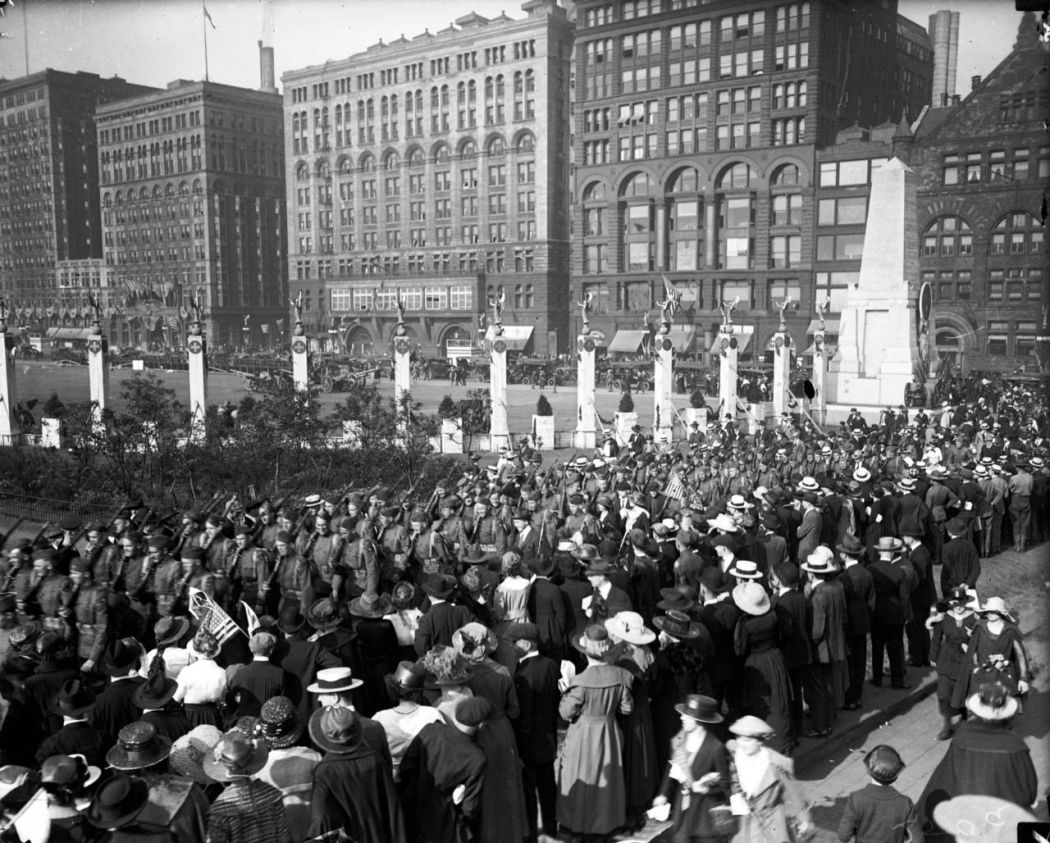
Troops from the Illinois National Guard march in Grant Park during World War I. Undated photo. — Chicago Tribune historical photo
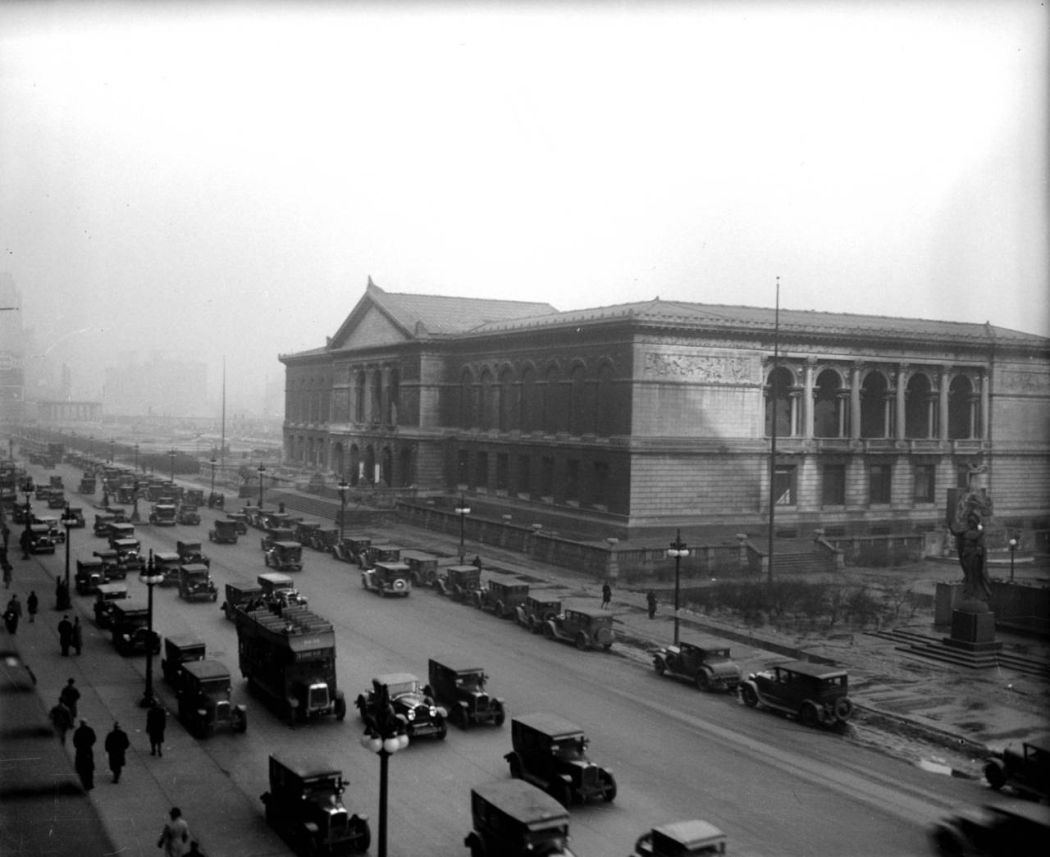
The Art Institute in Chicago was the only building allowed to be built in Grant Park. Photo circa 1910-1920. — Chicago Tribune historical photo

The Van Buren Street pedestrian bridge is built at Grant Park, circa Oct. 27, 1926. The bridge spans over the railroad below. — Chicago Tribune historical photo
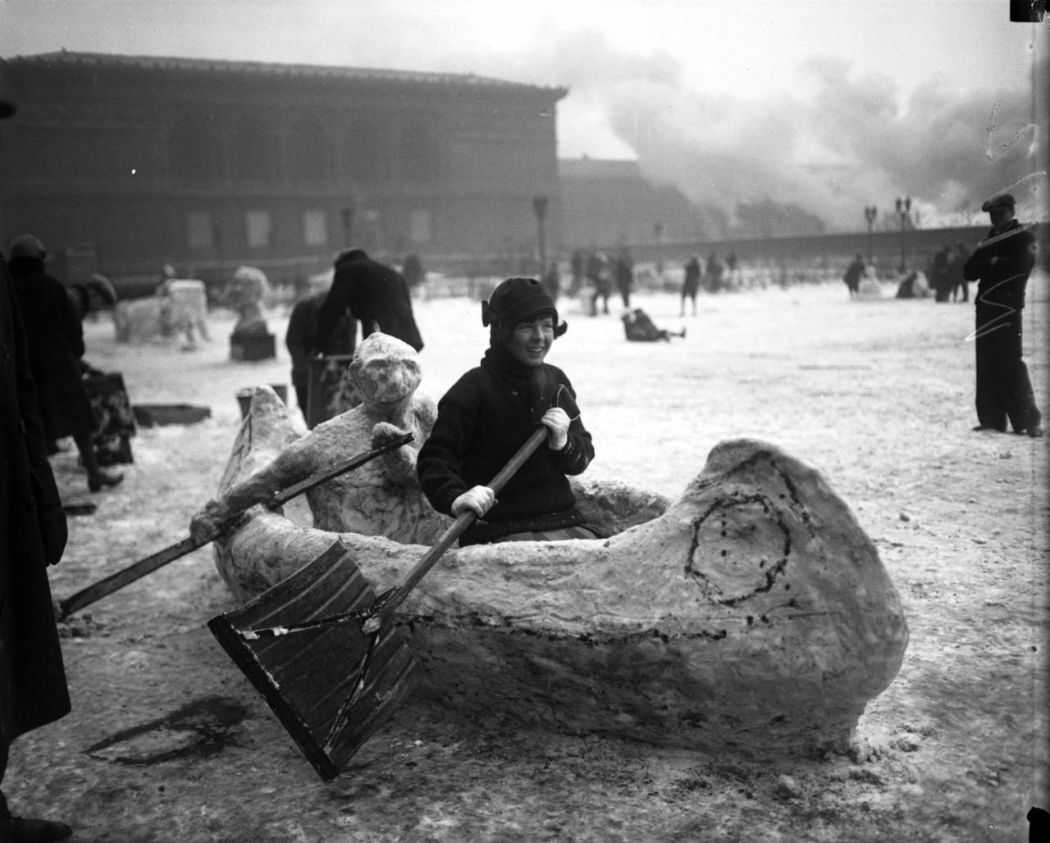
Mary Duzan in a canoe made of snow at Grant Park. The Art Institute is in the background. Undated photo. — Chicago Tribune historical photo
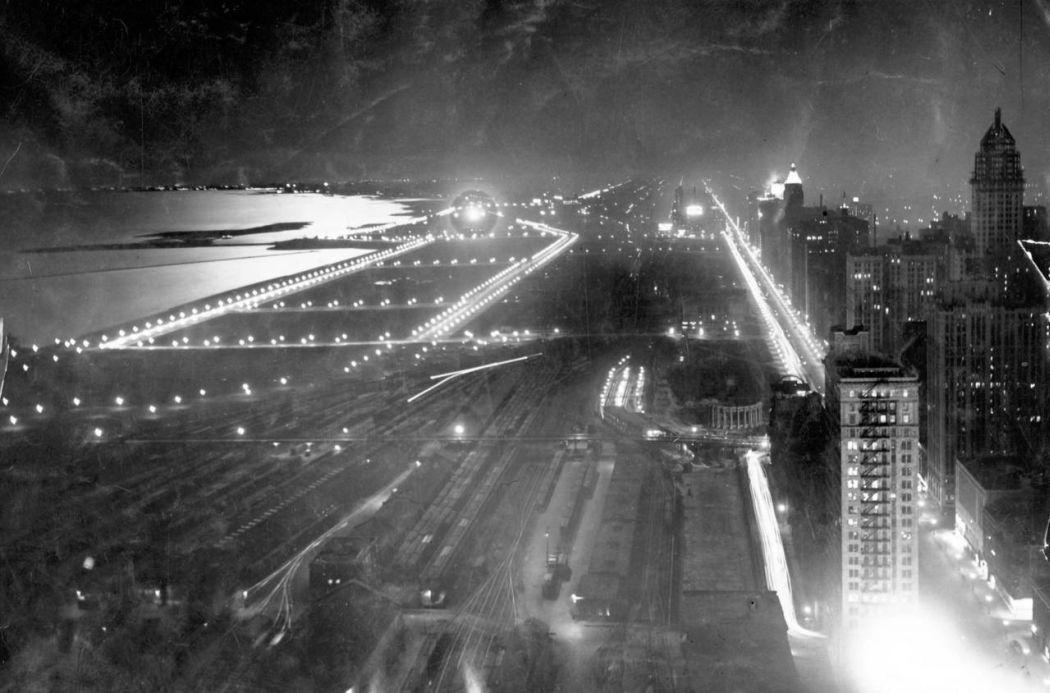
Looking south at Grant Park from the top of the Tribune Tower in 1927. — Chicago Tribune historical photo
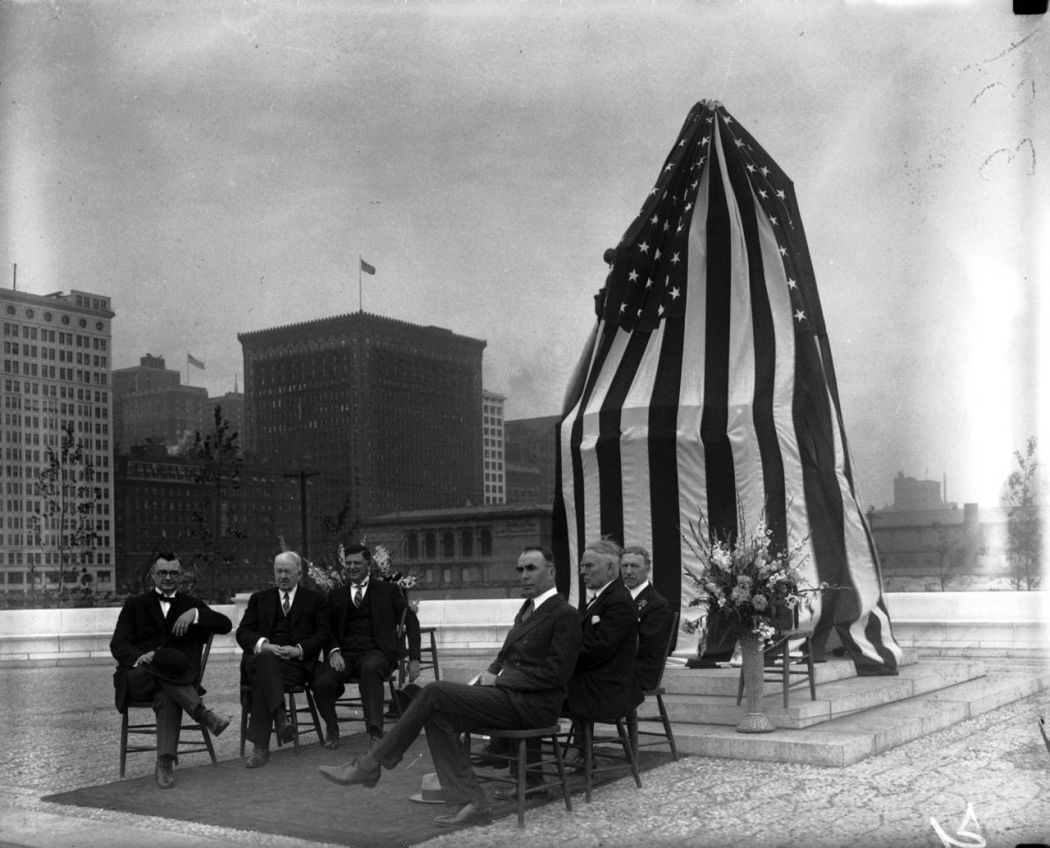
The Rev. W. Clyde Howard, from left, Charles S. Cutting, Edward J. Kelly, Leonard A. Busby, George P. Merrick and William J. Lauterbach at the unveiling of ‘The Seated Lincoln’ statue in Grant Park on May 31, 1926. The monument was the last work created by Irish-born sculptor Augustus Saint-Gaudens and sits just east of South Columbus Drive. It was a gift from wealthy (and long-dead) Chicagoan John Crerar. — Chicago Tribune historical photo
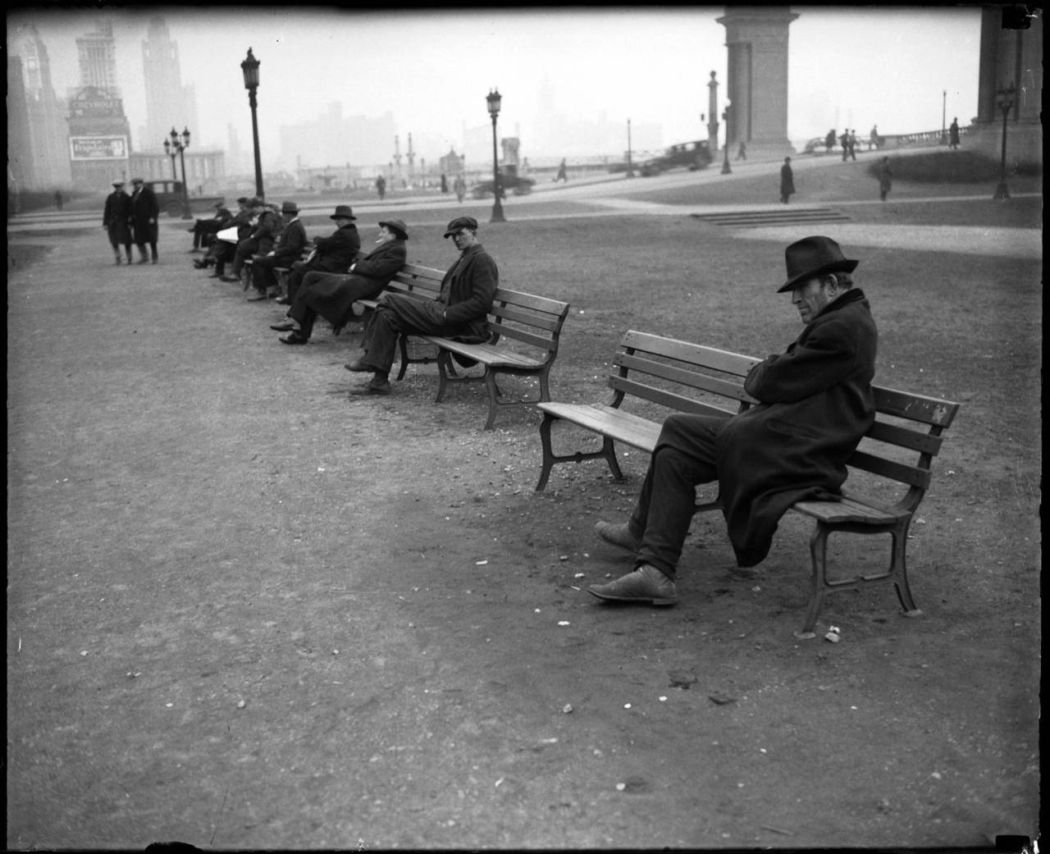
The view looking north of “bums in Grant Park”, according to the Tribune, circa March 13, 1927. Note the Tribune Tower in the background. — Chicago Tribune historical photo
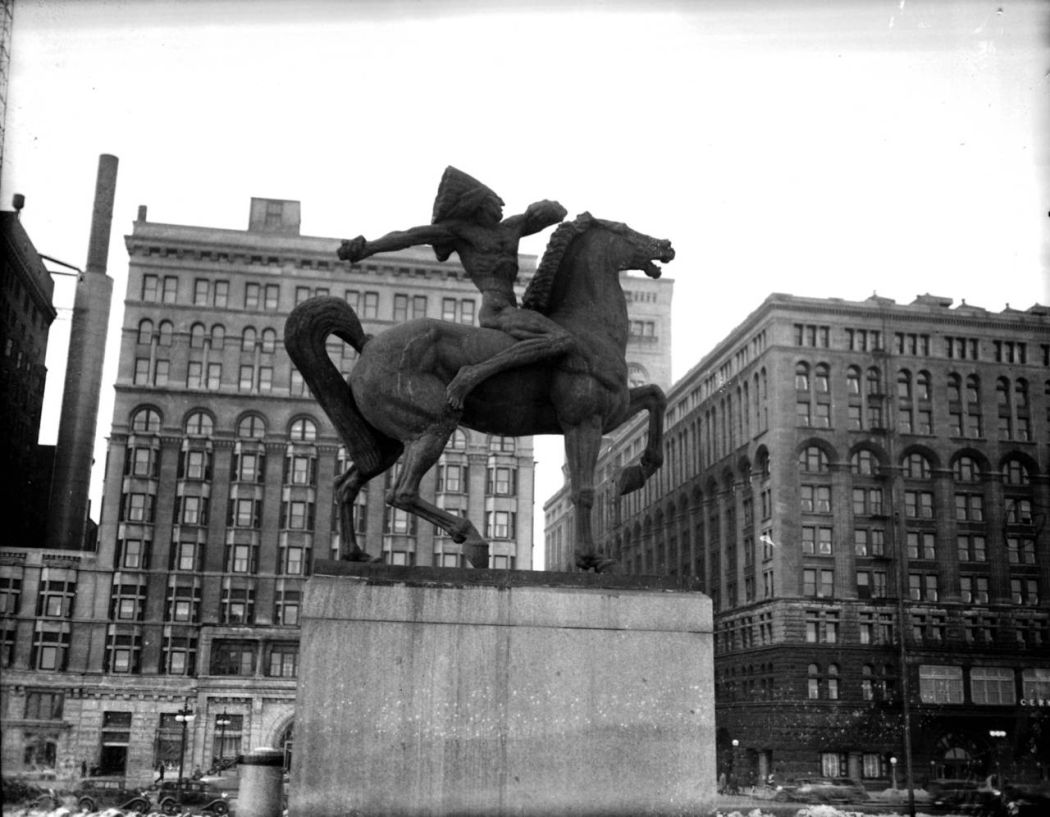
The Spearman sculpture is one of two similar sculptures, the second named The Bowman, by Ivan Mestrovic that stand as gatekeepers to Congress Plaza in Grant Park. The “Indians,” as they are more commonly called, were installed in 1928. Photo circa 1928. — Chicago Tribune historical photo
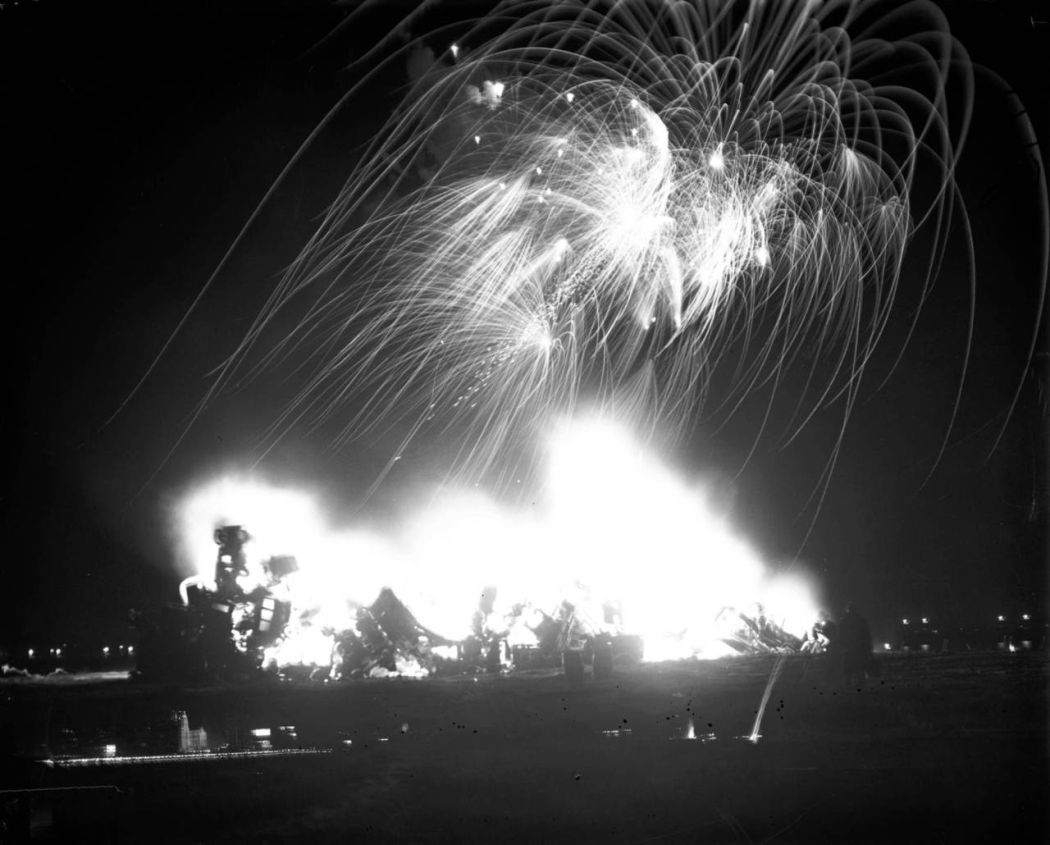
The Chicago Automobile Trade Association started off ‘Used Car Week’ by destroying 150 worn-out cars at Grant Park on March 30, 1929. The fire was set at north island and was accompanied by fireworks and a bomber plane dropping incendiary missiles on the autos. The association created the huge bonfire to show the wisdom of destroying old cars that had become dangerous in traffic. — Chicago Tribune historical photo
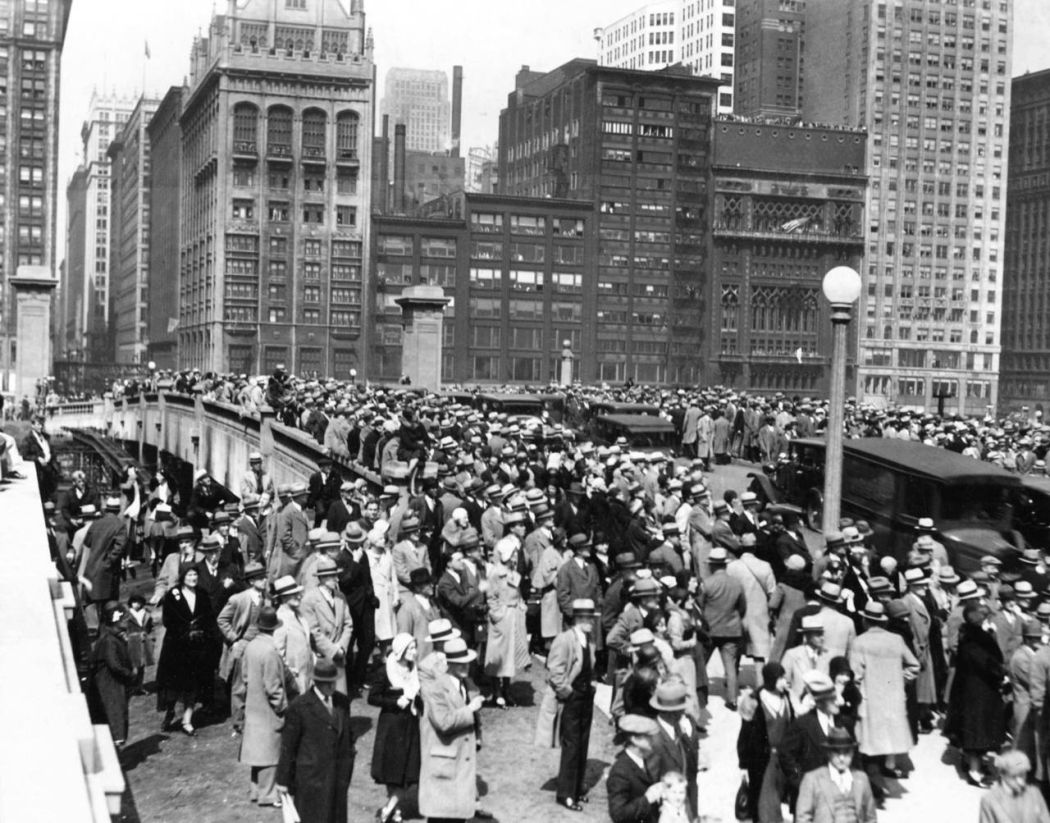
The Monroe Street bridge was crowded as people flowed into Grant Park from Michigan Avenue during the Chicago Jubilee air show in 1931. Spectators gathered along the lakefront from Waukegan all the way south to Gary, Ind. — Chicago Tribune historical photo
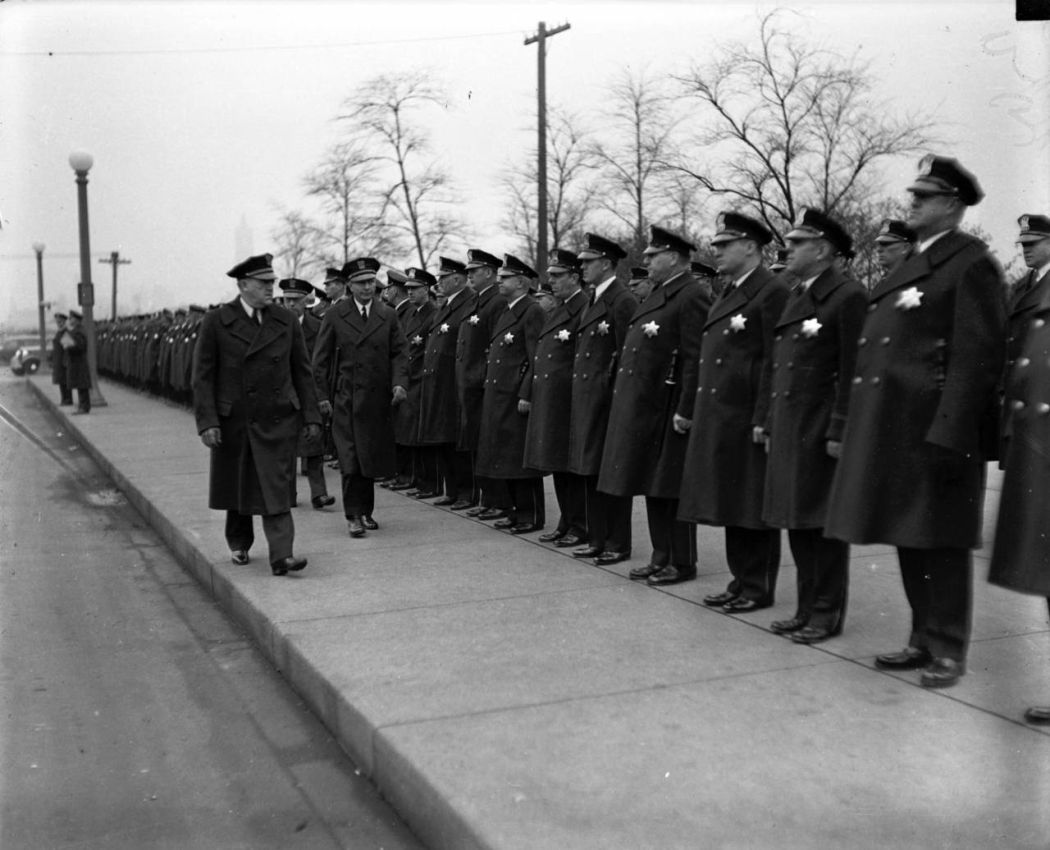
Chicago Police Department inspection at Grant Park, circa Nov. 29, 1935. — Chicago Tribune historical photo
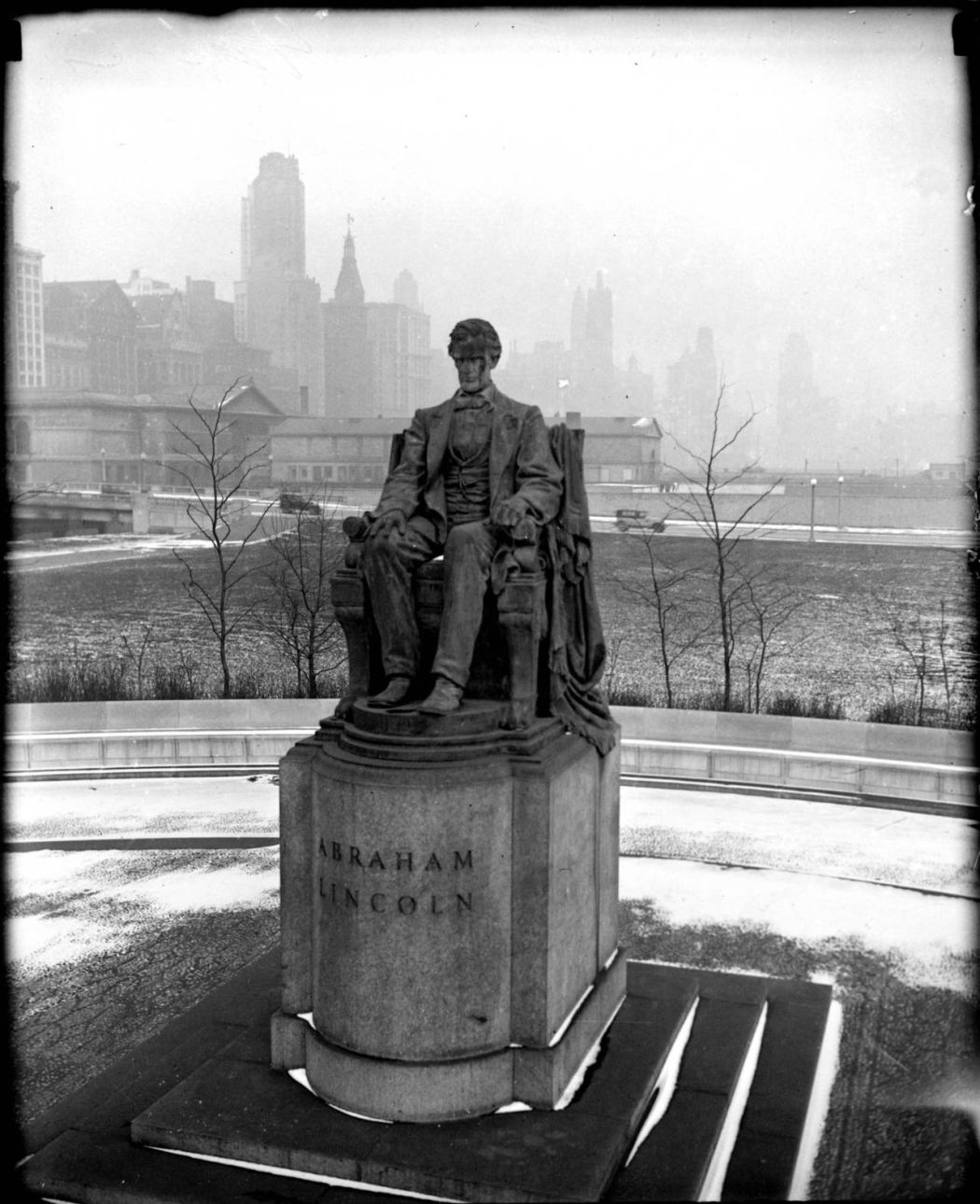
‘The Seated Lincoln’ monument during winter at Grant Park, circa Feb. 12, 1931. The monument, which was installed in 1926, was the last work created by Irish-born sculptor Augustus Saint-Gaudens and sits just east of South Columbus Drive. It was a gift from wealthy (and long-dead) Chicagoan John Crerar. — Chicago Tribune historical photo
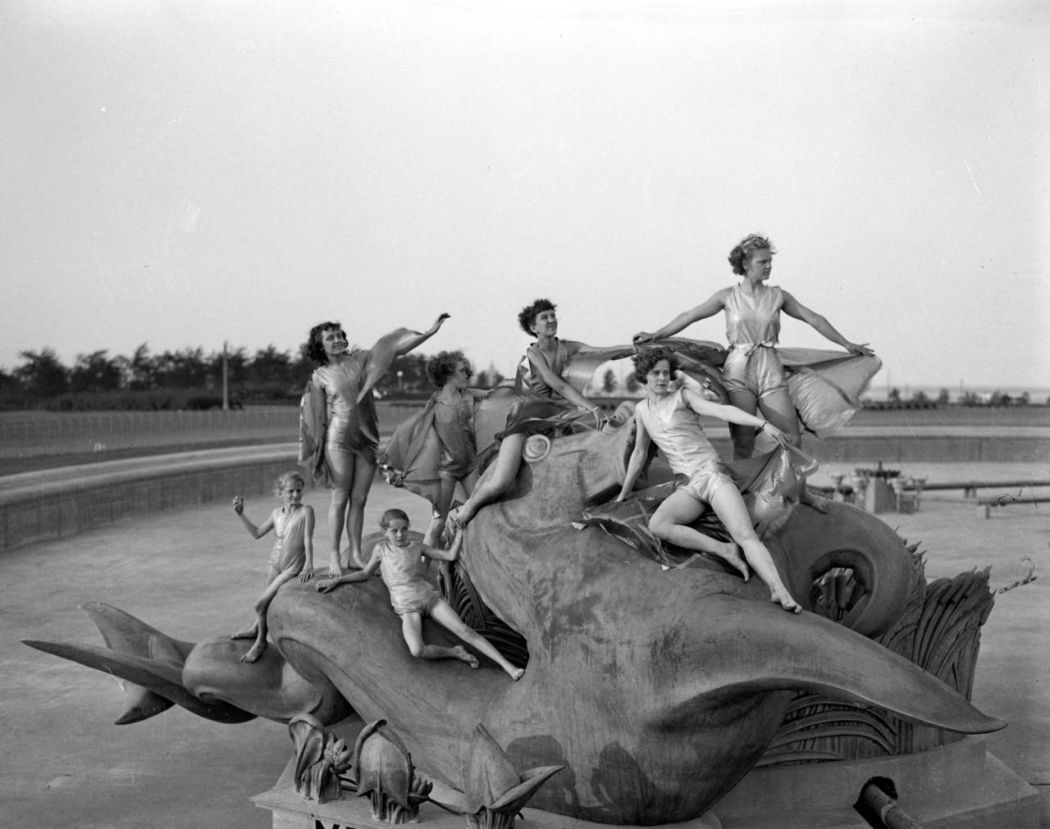
Over 300 girls rehearsed for the Fountain Dance Pageant on July 15, 1936, at Buckingham Fountain in Grant Park. The ‘Enchanted Fountain’ performance would take place two days later for three nights, creating a musical dance and color light symphony in which the girls actually danced in the fountain basin and at the base of the structure. Much of the dance took place in the water jet area with the performers wearing silk, rubber and cellophane waterproof costumes. The pictured performers are Lorraine DeChant, Miriam Henry, Mary DeChant, Joan Griffin, Eleanor Shettler, Katherine Nassem, and Lillian Dean. — Chicago Tribune historical photo
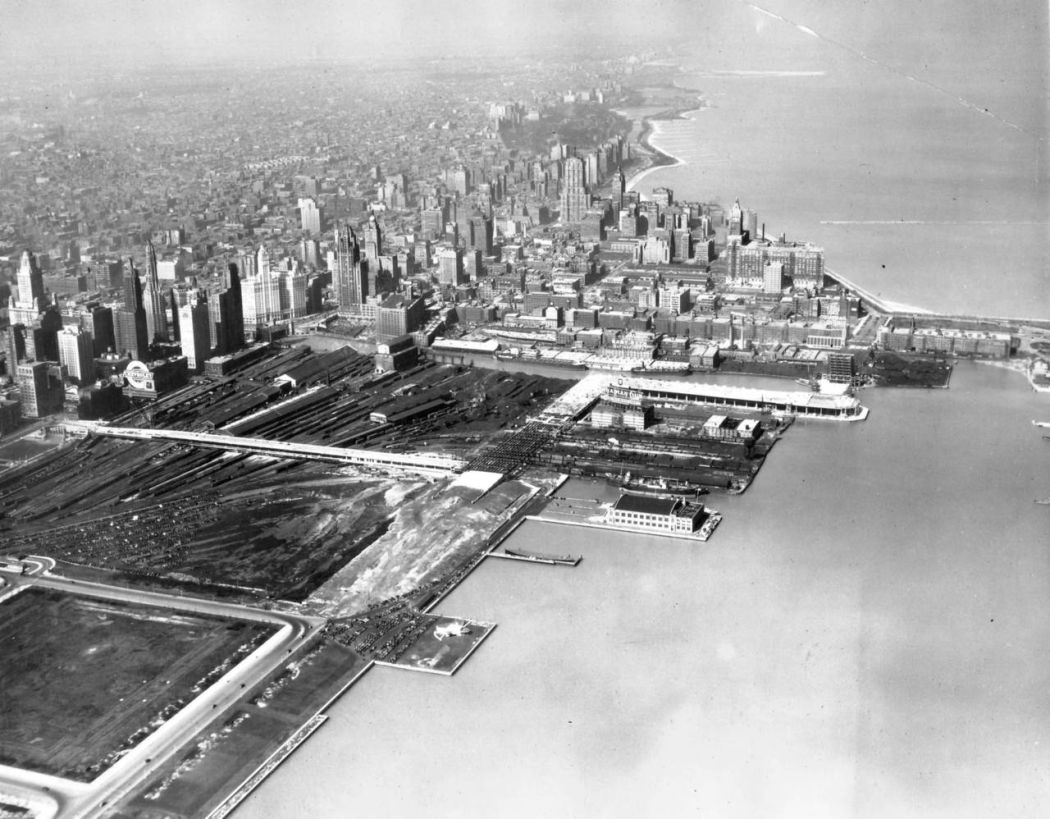
A 1937 view of the lakefront, with the rail yards that would became Grant Park on the left. The ivory Wrigley Building can be seen on the middle left of the photo. — Chicago Tribune historical photo
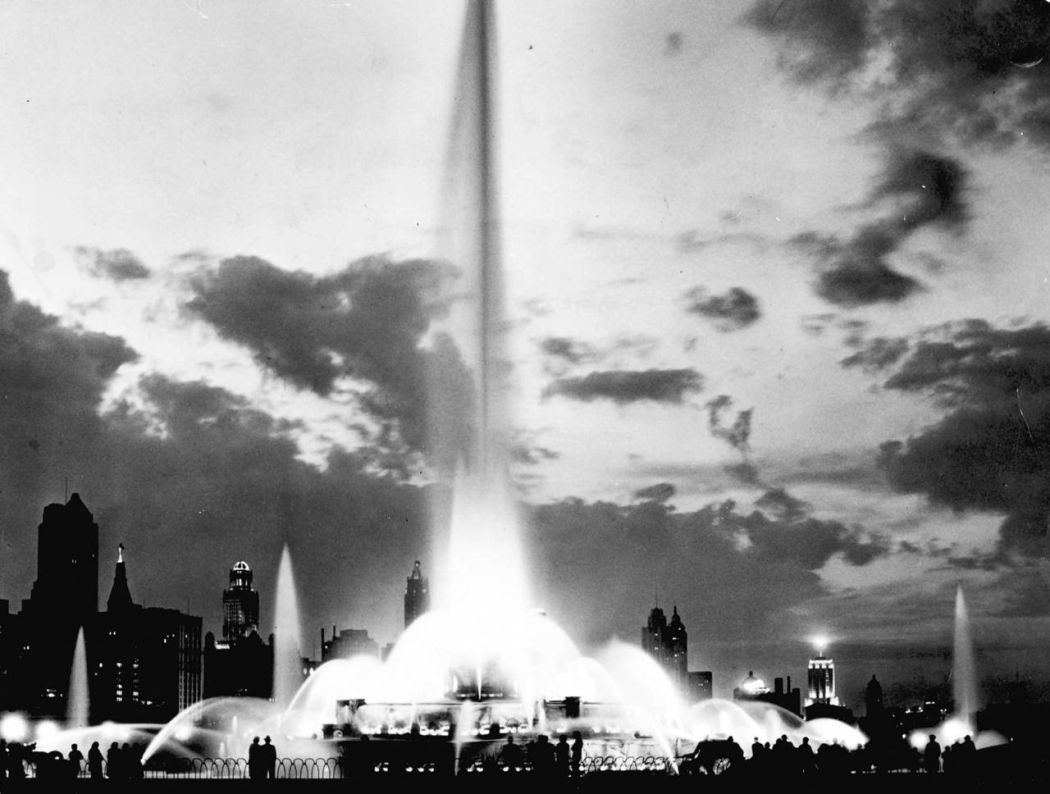
Buckingham Fountain, shown here in 1935, was built in 1927 with $500,000 donated by Kate Buckingham in memory of her brother Clarence, a director of the Art Institute. The fountain is modeled after one at Versailles, except that, in true Chicago fashion, it is twice as big. — Chicago Tribune historical photo
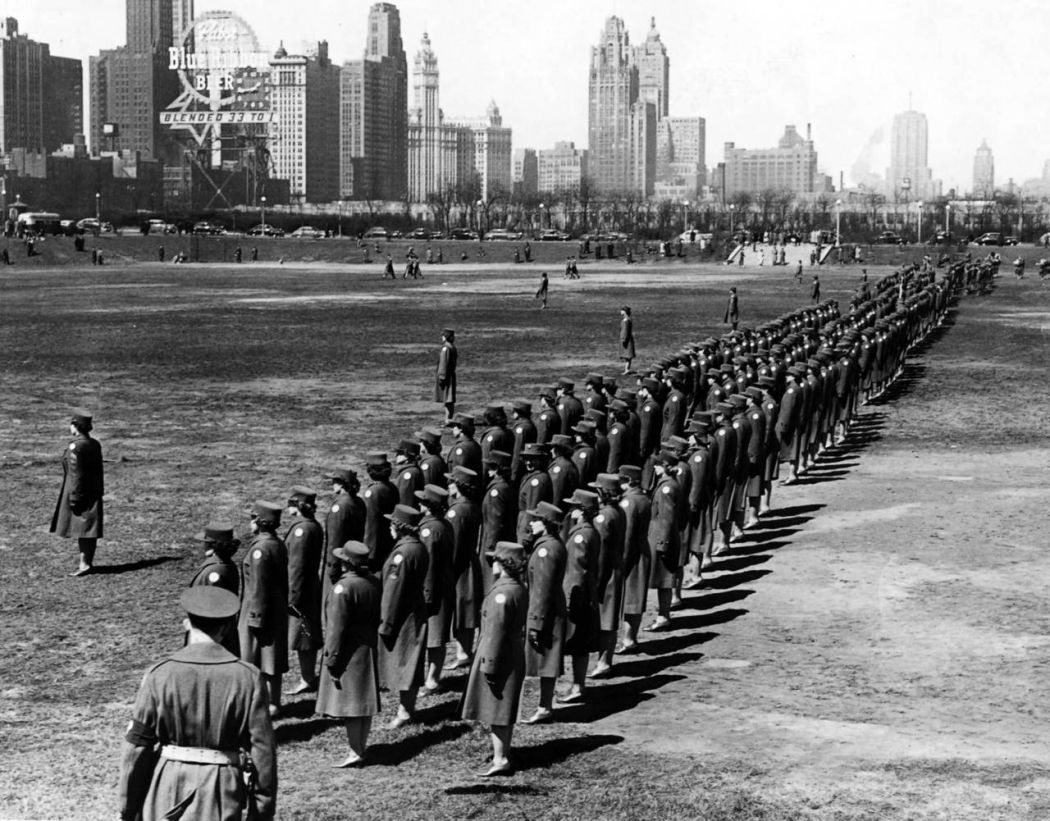
Women’s Army Corps personnel march in Grant Park in Chicago in 1943 during World War II. — Chicago Tribune historical photo
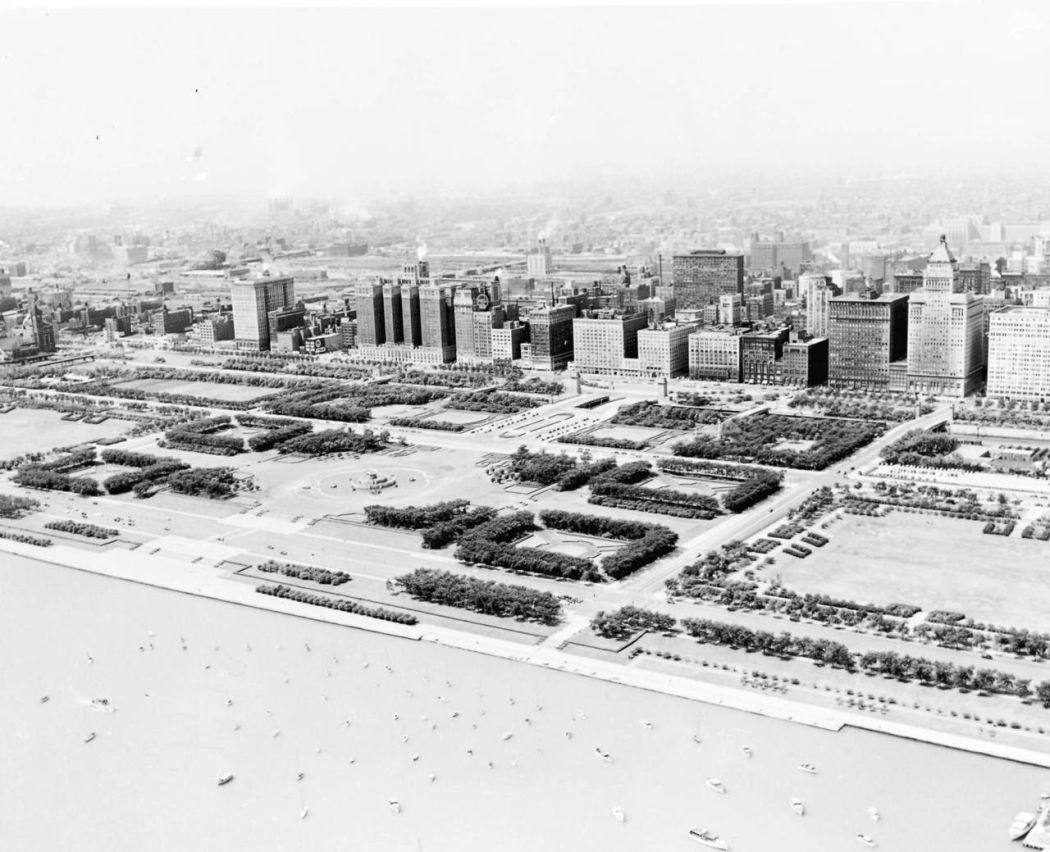
The landscaping of Grant Park, shown in about 1950, followed Daniel Burnham’s 1909 plan, which called for formal, symmetrical gardens. Burnham’s plan, however, placed the Field Museum at the heart of the park. After retailer Montgomery Ward defeated that proposal in court, Buckingham Fountain was constructed there instead. — Chicago Park District
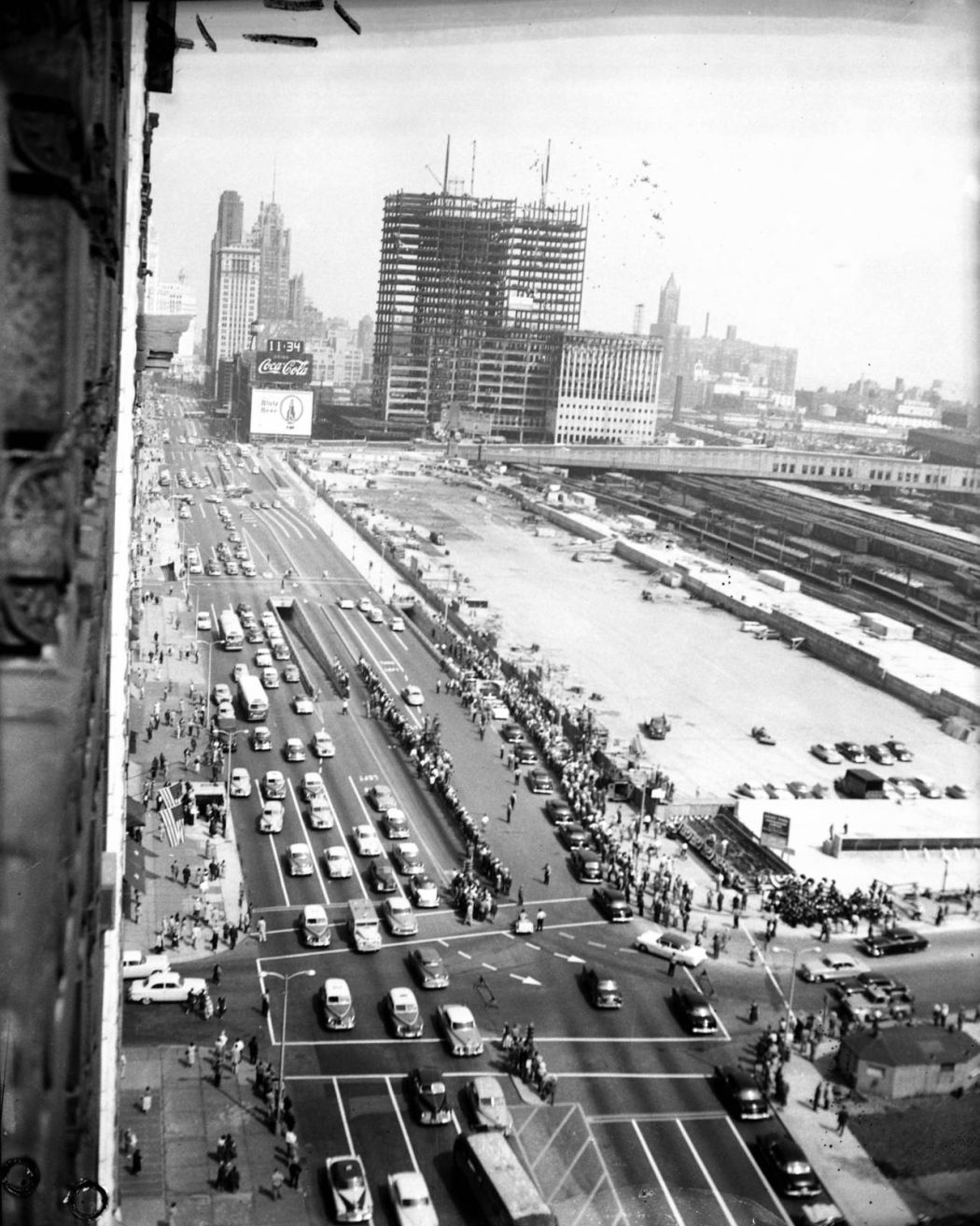
Opening of the underground parking garage at Grant Park on Sept. 1, 1954 with Mayor Kennelly. The entrance to the garage is on Michigan Avenue, seen here, just north of Monroe. This area is now Millennium Park. — Chicago Tribune historical photo
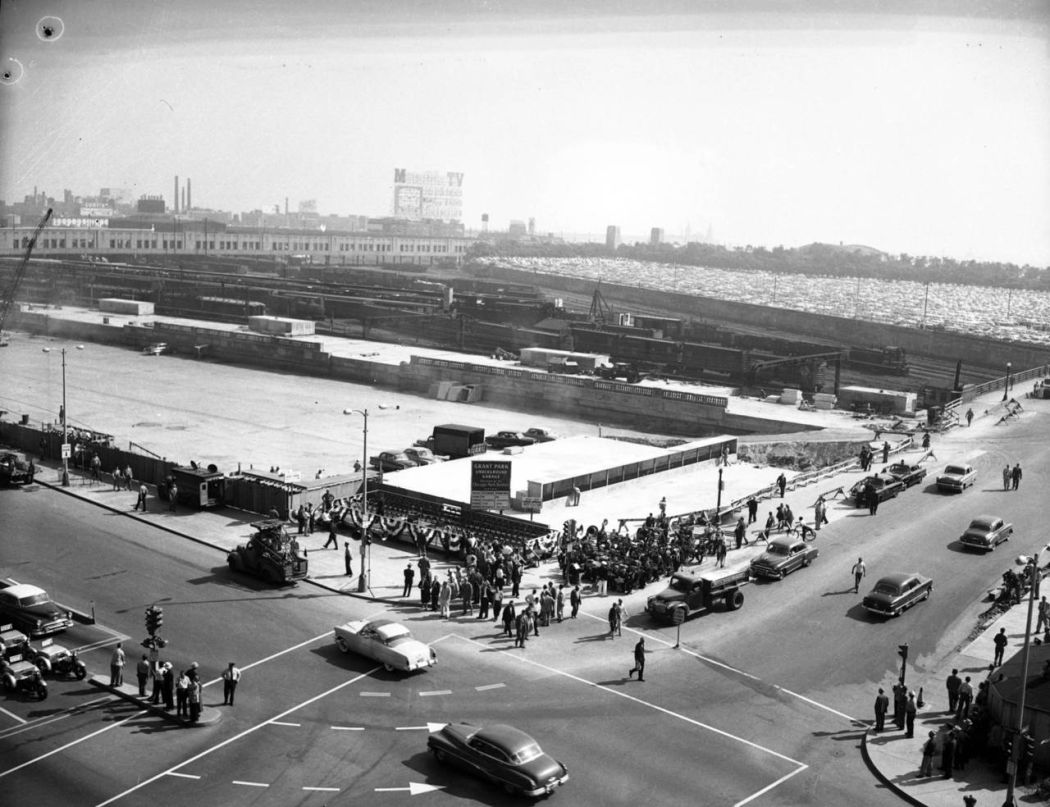
An overhead shot before the official opening of the garage shows part of the new garage and the old Monroe Street parking lot in the background. The opening of the underground parking area at Grant Park took place on Sept. 1, 1954 with Mayor Martin Kennelly. — Chicago Tribune historical photo
via Chicago Tribune

